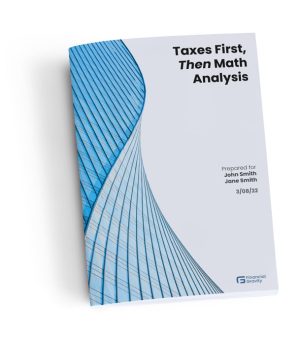Mutual Funds’ 100-Year Dominance Is Failing for All the Right Reasons
John C. (Jack) Bogle founded The Vanguard Group in 1975, having set his mind to creating investment options that would optimize investor returns. As a brilliant young student at Princeton, Bogle had studied mutual funds and found that picking stock winners on a consistent basis was virtually impossible, and he saw allowing retail investors to invest in indexes, instead of individual stocks or mutual funds, as a massive market opportunity.
Vanguard launched its first version of the S&P 500 index fund in May 1976. Today, Vanguard manages over $8 trillion in assets, making it the second-largest asset manager in the world.
Last month, after nearly 50 years since their inception, passively managed funds surpassed actively managed funds in total assets under management. On February 13th, Morningstar published an article titled “Index Funds Have Officially Won,” announcing that indexed funds have finally captured more than 50% of the fund universe’s assets.
This is no minor story in the investments industry and no freak trend. According to the article, “Almost certainly, (passive funds) will crack the 70% mark during the next decade.” This is a massive threat to the mutual fund industry, which appears to be going the way of the dinosaur.
Why did it take two generations of investors for the passive style to take leadership? A combination of incentives for the mutual fund industry, which captures hundreds of billions of commission dollars per year, and investor bias.
The incentives of mutual fund wholesalers and salespeople are easy to understand: They seek to maximize their income. Investor bias is trickier; it falls into the broader category of behavioral finance, a field of study that seeks to explain market and asset pricing anomalies. Behaviors like prospect theory, confirmation bias, and recency bias all tend to work against the best interests of investors, ultimately leading to the buy high/sell low trap.
The average retail fund investor notoriously underperforms market indexes, a great irony given that index investing is generally much lower cost, more transparent, and offers superior risk-adjusted returns relative to the actively managed offers.
Experienced investors have likely noticed that Wall Street does not give up its commissions lightly and has fought to keep the actively managed mutual fund alive despite the fact that active funds are virtually synonymous with failure. A 2022 study by S&P Dow Jones found that “Over the past 10 years, 82% of fund managers fell short of their S&P 500 benchmark, with 87% failing over 15 years.”
Investors tend to seek professional advice as they accumulate assets, and for 100 years, mutual fund companies have sought to fill that void. They’ve enjoyed notable success—even after seeing historic outflows in recent years, they still command over $11 trillion in AUM. This recent news demonstrates not only a shift in buyer behavior but in the investments industry itself.
Prioritizing Better Advice Over Salesmanship: A Winning Formula
University of Chicago alumnus and professor Paul Samuelson, who has been called “the father of modern economics,” ranked Bogle’s invention of the index fund as among the greatest inventions in history “…along with the invention of the wheel, the alphabet, Gutenberg printing.”
There is nothing inherently wrong with active investing; rather, the incentive structures of the mutual fund industry lead to its failure. Core to that failure is their essential incentive to achieve size over performance. Mutual fund managers are paid for growing assets, not for performance—the provenance of hedge fund managers—which leads to many sins, including style drift and over-diversification.
Financial advisors have come to understand that what investors need is not a magic formula or a secret sauce; what they need is better advice. Advice that aligns their goals and risk tolerance with the realities of investing and focuses less on performance and more on risk management and tax avoidance.
Index investing is liquid, cheap, and easy to access, but providing wise counsel and effective asset management takes real subject matter expertise and knowledge of securities and tax laws. Increasingly, advisors today seek to add value through their advice and portfolio management and not via selling returns. In this way, the American family is enjoying the democratization of the family office, the overwhelming choice of the billionaire class.
Jack Bogle’s invention has helped both advisors and their clients take greater control of their portfolios and, in so doing, have improved outcomes for millions of investors while revolutionizing the industry. Mr. Bogle passed away several years ago, but his legacy lives on, and he deserves his place on the Mount Rushmore of asset managers.
If you’re concerned about the high costs of your mutual funds or about the incentive structures of your financial advisors, we offer a free report called the Taxes First, Then Math analysis. It’s a detailed report using publicly available resources that will estimate the total costs, tax efficiency, diversification, and risk exposure of your portfolio.









